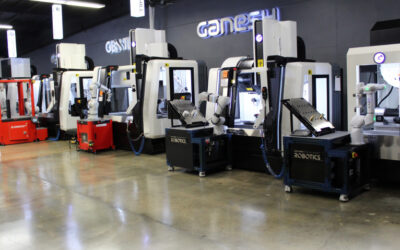According to a sixteenth-century proverb, the children of shoemakers always go barefoot. While this saying has been reinterpreted to apply to different professions – like a mechanic whose own car is leaking oil – the meaning is the same: those close to a skilled person are often the last to benefit from their knowledge. With today’s rapid shift from trades such as carpentry, welding, and plumbing toward technology-based jobs, skills are in danger of being lost.
In generations past, many mothers and fathers not only handed down skills to their children but insisted on them as a way of preparing them for life. From learning to change motor oil to preserving food for the winter, many of these skills are disappearing, as it is often easier and more convenient to take a car to a garage for service by a professional or buy canned or frozen food at the grocery store. And just as skills gained by our parents and grandparents at home have changed, so have the skills needed by today’s younger men and women in the workplace.
The massive social and economic changes started by the Industrial Revolution of the eighteenth century made many skills redundant, replacing manual labour with machines, and we are now entering what the World Economic Forum Founder and Executive Chairman Klaus Schwab deemed ‘The Fourth Industrial Revolution’ in his book of the same name.
Schwab argues the latest Industrial revolution will be even more intense than the previous three. Referring to the rise of innovations like DNA sequencing, virtual assistance, three-dimensional printers and ‘smart’ factories, he raises thought-provoking points about how technology will shape the world and employment of tomorrow.
In just a few decades, jobs many of us assumed would exist forever have gone the way of the dodo. Once-established roles like milkman, elevator operator, switchboard operator, and typist only exist today in movies and television series like Mad Men, set in the fictional Madison Avenue advertising agency Sterling Cooper in the sixties. Other jobs, like linotype operators – from a time that required every line in newspapers to be cast in hot metal – seem so archaic as to be inconceivable. Many of these and other positions became obsolete because of technology, mainly computers.
While it is unlikely humans will be replaced entirely, skills, as we know them, will not only be technological but humanistic and communication-based, falling under the banner of emotional intelligence (EI), also known as emotional quotient (EQ) and emotional leadership (EL).
While there is some disagreement regarding the exact number of skills under the EI umbrella – ranging from as few as three to as many as sixteen – Psychology Today defines the cornerstones of EI as “emotional awareness, or the ability to identify and name one’s own emotions; the ability to harness those emotions and apply them to tasks like thinking and problem solving; and the ability to manage emotions, which includes both regulating one’s own emotions when necessary and helping others to do the same.”
Although working for the same company or industry in the past, many workers still performed their tasks as individuals, whether sewing clothes at sweatshop stations or putting parts together on assembly lines. While those jobs still exist, the workforce of the future, with the next generation at the helm, will be vastly different. Collaboration will become more important, along with the ability to think creatively and critically to solve complex problems.
As technology takes over jobs, being able to manage co-workers, make sound judgements, and other emotional intelligence skills will become more important in the workplace. Technology will advance and automation will take over many jobs, but robots are still incapable of emotions such as empathy.
The Future of Jobs Report, issued in 2018 by the World Economic Forum, found that almost fifty percent of companies believe automation will result in some reduction to their full-time workforce by 2020. It predicts that there will be an increase in in-demand roles such as software and application developers, e-commerce and social media specialists, and data analysts and scientists, along with roles requiring ‘human’ skills, including training and development and sales and marketing.
Most telling of all, the report states that just a few years from now, by 2022, “no less than fifty-four percent of all employees will require significant re- and upskilling.” These EI-related skills will include active learning, learning strategies, persuasion and negotiation, originality, creativity, and how to take the initiative. “Emotional intelligence, leadership, and social influence, as well as service orientation, will also see an outsized increase in demand relative to their current prominence,” adds the report.
EI use will require future workers to learn and adapt differently from their parents’ generation and will apply to everything from manufacturing jobs to office work. And while some might believe the number of human beings working in manufacturing is declining, the opposite is true, according to multinational professional services company Deloitte, discussing a 2018 study on manufacturing and the Fourth Industrial Revolution. According to Deloitte, the report stated that advanced robotics, automation, the Internet of Things (IoT), artificial intelligence and other technologies are actually “likely to create more jobs than they replace – as illustrated by the tight labour conditions in the US and global manufacturing industry.”
Human beings, while resistant to change, are highly adaptable creatures. Many discussions about job loss and fighting technology likely took place during the first Industrial Revolution from 1760 to 1840, and yet, humanity survived. People worked and continue to work hundreds of years later. Many types of jobs have vanished, yet others have emerged, actually leaving companies with shortfalls of workers.
According to Deloitte and The Manufacturing Institute, the period between 2018 and 2028 will leave a gap of 2.4 million unfilled jobs, costing the economy some 2.5 trillion. Industry will continue, but it will be through positions many of us have never heard of, such as ‘drone data coordinator,’ ‘digital offering manager,’ and even ‘robot teaming coordinator.’ And with artificial intelligence and automation becoming part of our daily lives, from self-serve kiosks to automatic burger-making machines in restaurants, an entire generation will be needed to design, service, and program the technology of tomorrow.













